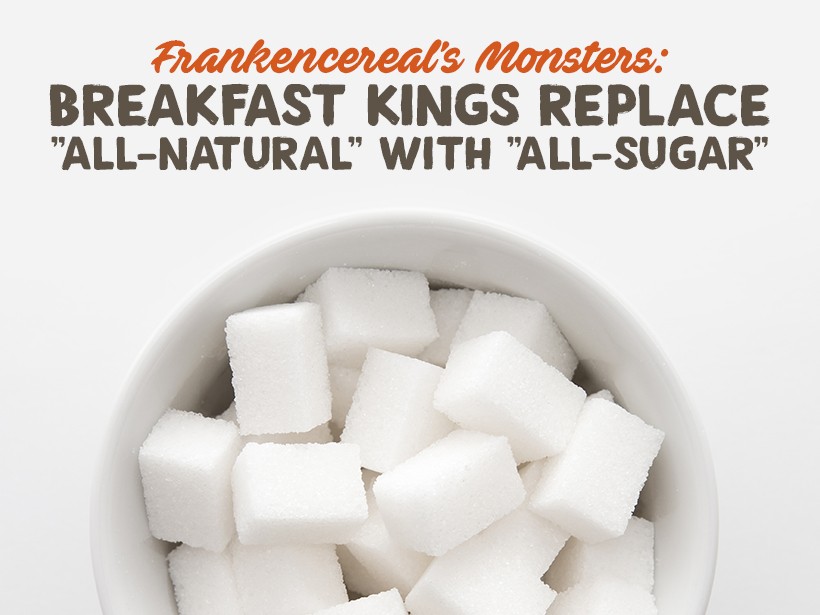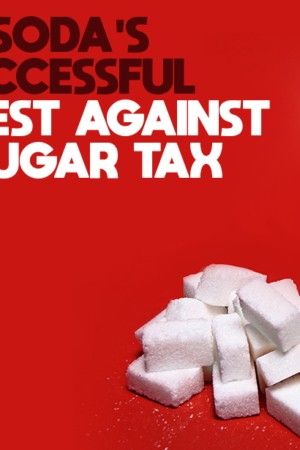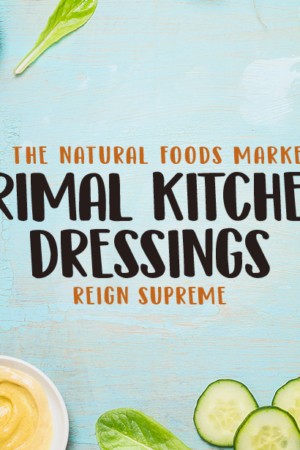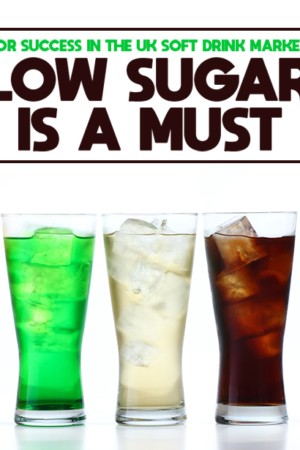Despite years of trying to either appease or trick the general public with new, “healthier” cereals, it seems that all of the big names in the industry are finally reverting back to the strategy they call tried and true: dumping enough sugar to paralyze a small dog into kids’ breakfast bowls. Kellogg’s, General Mills, and Post have had enough, they say, of trying appease so-called healthy consumers, who apparently haven’t been buying enough of their fiber- and protein-containing distortions of earlier products, and the cereal makers are conspicuously turning back the clocks to a time when no one bothered with how much sugar kids (and adults, for that matter) were eating.
Back to the Laboratory
Cereal sales in the United States have declined 11 percent over the last 5 years, and the industry giants are chalking it up to their supposedly humanitarian attempts to include slightly-less-offensive amounts of artificial flavoring, colors, preservatives, and added sugar in general in their products. The big players have indeed been busy buying up smaller producers with more natural brand images, as Kellogg did with Kashi, along with reinventing their own products to look—and in some cases even be—more natural.1 General Mills notably replaced the artificial ingredients in Trix with natural ones.2
Well, after a short-lived dip-of-the-toe into the world of radishes and turmeric, color number Red 40 is back, along with the rest of the Trix standards. Hardly the only one among its competitors to abandon terrestrial ingredients, General Mills’ return to the old rabbit represents a definitive industry-wide shift in the direction of more sugar.
They’re Magically Insidious
Beyond a simple retreat to industry staples, Big Cereal is pulling out all the stops, it seems, and bringing to life a program of new products of which even the most enthusiastic 9-year-old Saturday-morning-cartoon-special attendee could hardly have dreamt. Such comedies include Lucky Charms Frosted Flakes (sacrilege in some circles), Chocolate Peanut Butter Cheerios, and French Toast Crunch. Lucky Charms, too, has a bold new addition to its formula: unicorn marshmallows (they weren’t there already?).3
So far, these tactics have been working. General Mills, for example, reported in March a 2 percent rise in retail sales over its last quarter thanks to such concoctions. “Unicorns are popular. But unicorns and Lucky Charms are magical,” said President of Cereal Dana McNabb, in a statement entirely befitting the lurid Oz-like hypnotism motifs her title conjures up. A possible, if somewhat optimistic, explanation of the 5-year decline in cereal sales is that as Americans look to cut down on sugar, they cut out cereal altogether (regardless of any of the products’ late claims to healthiness). Regardless, it seems clear that the CEO’s, presidents, mayors, and congressmen of cereal are correct in their assertion that healthy eaters will never make for reliable cereal customers.
NUTRITIONAL DISCLAIMER
The content on this website should not be taken as medical advice and you should ALWAYS consult with your doctor before starting any diet or exercise program. We provide nutritional data for our recipes as a courtesy to our readers. We use Total Keto Diet app software to calculate the nutrition and we remove fiber and sugar alcohols, like erythritol, from the total carbohydrate count to get to the net carb count, as they do not affect your blood glucose levels. You should independently calculate nutritional information on your own and not rely on our data. The website or content herein is not intended to cure, prevent, diagnose or treat any disease. This website shall not be liable for adverse reactions or any other outcome resulting from the use of recipes or recommendations on the Website or actions you take as a result. Any action you take is strictly at your own risk.
- For Keto, the Everyday Research Says it All - March 6, 2019
- Huge Harvard Study Backs Up the Wide-Ranging Benefits of a Low-Carb Diet - February 25, 2019
- Experts Convene for Keto Conference - July 30, 2018




